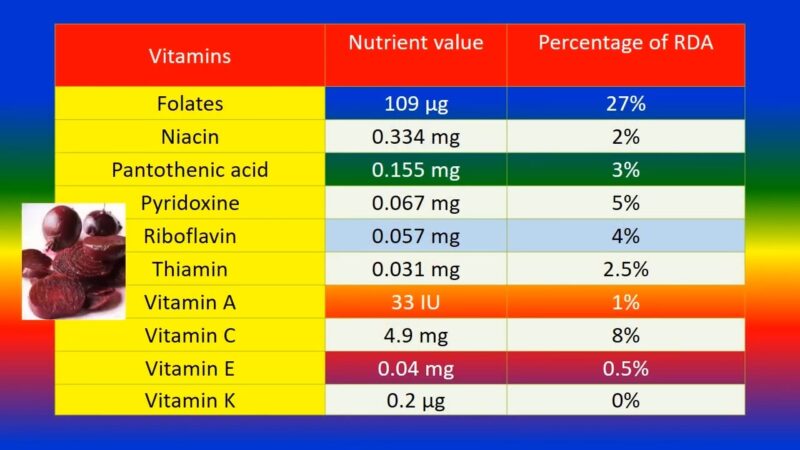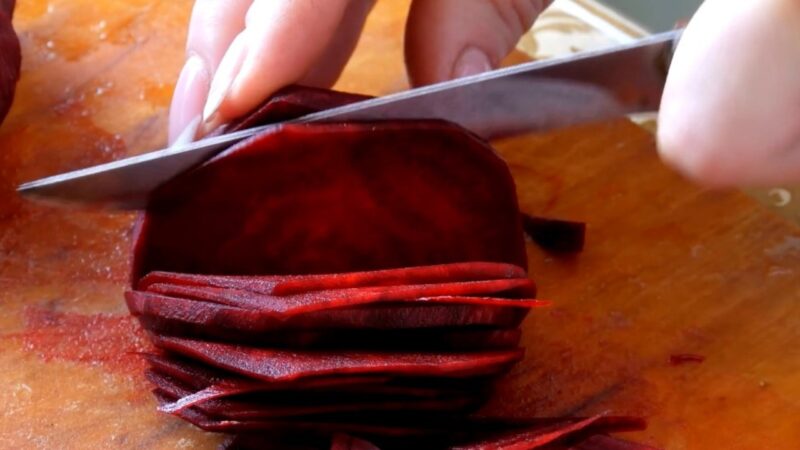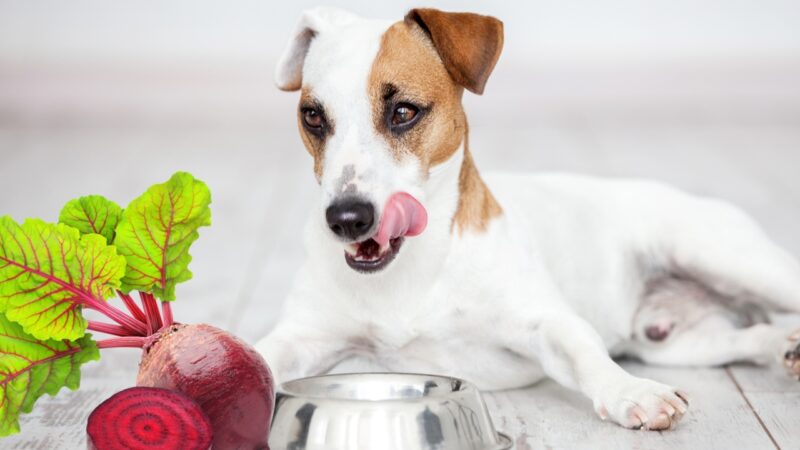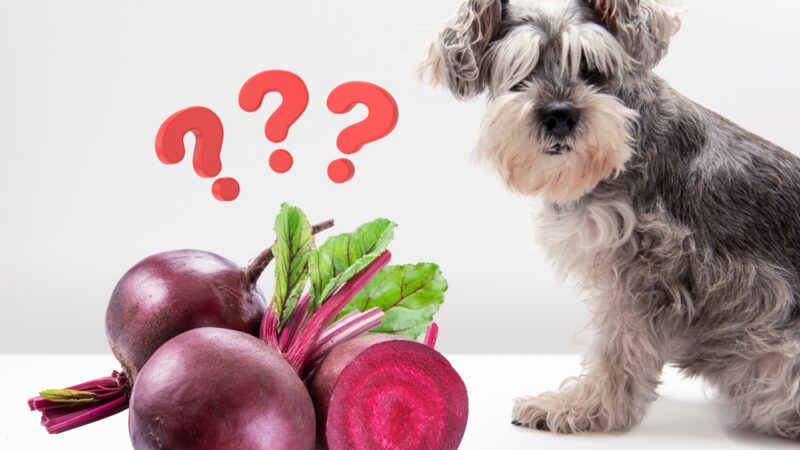Beets are a nutritious vegetable packed with vitamins, minerals, and antioxidants. But as a responsible dog owner, you might wonder if they are safe for your furry friend.
Understanding what foods are safe for dogs is crucial, as some human foods can be harmful to them. In this article, we will explore the nutritional value of beets and discuss whether they are suitable for canine consumption.
Nutritional Value

Beets are known for their rich content of fiber, vitamins, and minerals. They contain essential nutrients such as Vitamin C, potassium, folate, and magnesium. The skin is also rich in betalain pigments, which have antioxidants and anti-inflammatory properties.
Pro tip: Beets can be beneficial to a dog’s skin, coat, and digestion when served fresh and in moderation. They can be considered as a little something extra in your dog’s diet.
Are Beets Safe for Dogs?
Yes, they are safe for dogs when served fresh and in moderation. They are even found in some commercial dog foods. However, there are some considerations to keep in mind:
- Oxalic Acid Content: High in oxalic acid, which can form bladder stones, urinary crystals, and kidney stones. It can also cause calcium deficiencies. If your dog is prone to kidney stones or has a calcium deficiency condition like osteoporosis, it’s best to consult your vet before giving them anything new.
- High Carbs and Sugar: Also high in carbs and sugar, so your dog should eat only small quantities. Too much sugar can contribute to pancreatitis or obesity.
- Acidic Nature: They are an acidic vegetable, which can cause digestive trouble in some dogs, including gas and diarrhea.
Fun Fact: Fresh beets are the best option for dogs, and they can be fed either cooked or raw. Organic beets, grown without pesticides and other chemicals, are the safest choice.
Cooked vs. Raw

When it comes to feeding beets to your dogs, both cooked and raw options are available. Let’s explore the differences in terms of safety and nutritional value:
- Raw: Retain most of their nutritional value and can be a crunchy treat. However, they should be scrubbed clean, peeled, and grated or cut into small, bite-sized pieces to avoid choking hazards. Organic beets are the safest choice.
- Cooked: More versatile and easier to digest. You can bake, roast, or boil them. The key is to keep them plain and unseasoned, as seasonings like garlic and onion can be toxic to dogs.
| Aspect | Raw Beets | Cooked Beets |
|---|---|---|
| Nutritional Value | Higher | Slightly Lower |
| Digestibility | Less Digestible | More Digestible |
| Preparation | Grate or Cut | Bake, Roast, Boil |
Pro tip: If you give your pet raw beets as a treat, you might want to do so outside. That beet-red pigment really stains!
Potential Risks and Considerations
While beets are generally safe for dogs, there are some potential risks and considerations to keep in mind:
- Oxalic Acid: As mentioned earlier, beets are high in oxalic acid, which can lead to bladder stones and calcium deficiencies in susceptible dogs.
- Sugar Content: High sugar content can contribute to obesity and pancreatitis if consumed in large quantities.
- Digestive Issues: Some dogs may experience gas and diarrhea due to the acidic nature of beets.
Fun Fact: Canned beets can also be an option for dogs, but be very careful in selecting a brand with no salt added and no other additives.
Moderation and Portion Control
Moderation is key. They should be considered an occasional treat or snack rather than a regular part of the diet.
| Dog’s Size | Recommended Portion |
|---|---|
| Small | A few teaspoons |
| Medium | A tablespoon or two |
| Large | A small handful |
Remember, these are general guidelines, and individual needs may vary. Always consult with your veterinarian to determine the appropriate portion size for your specific dog.
Preparing Beets for Dogs
A simple process, but it’s essential to follow safe methods to make them suitable for canine consumption. Here’s how you can do it:
- Cooking: You can bake, roast, or boil beets. Keep them plain and unseasoned, as seasonings can be harmful to dogs.
- Boiling: Boiling is the easiest method. You can mash the beets or cut them into small chunks after boiling.
- Steaming: Steaming preserves most of the nutrients and makes the beets soft and easy to digest.
- Blending: Blending raw or cooked beets into a puree can be a tasty addition to your dog’s meal.
Pro tip: Always scrub and peel the beets, as the peel is hard to digest and not too tasty for dogs. Serve in very small pieces to avoid choking hazards.
Beets in Commercial Dog Food
They are found in some commercial dog food products. While they add color and fiber, it’s essential to read ingredient labels and choose reputable brands. Here’s what to look for:
- No Additives: Select products without added salt or other harmful additives.
- Quality Brands: Opt for brands known for their quality and natural ingredients.
- Moderation: Remember, beets should only be a small part of your pet’s diet.
Fun Fact: Beets in commercial dog food are often used for their fiber content, aiding in digestion.
FAQ
Can dogs eat beet greens or beet tops?
Generally safe but should be offered in moderation. Cooking them can make them more digestible.
Are there any benefits of feeding beets to dogs?
Yes, they offer potential health benefits such as improved digestion and immune system support due to their rich nutritional content.
Can beets cause stomach upset in dogs?
They are acidic and can cause digestive issues like gas and diarrhea. Feeding in moderation and proper preparation can minimize these effects.
How should I introduce beets to my dog’s diet?
Start with a small amount and gradually increase the portion, monitoring for any adverse reactions.
Are there any signs of beet allergy in dogs?
Watch for indications of an allergic reaction, such as itching or skin irritation, and consult a veterinarian if symptoms appear.
Can beets change my dog’s urine color?
Yes, the betalain pigments in beets can cause harmless discoloration of urine. If the color doesn’t disappear after a day, consult a veterinarian.
Pro tip: Fresh beets are the best option for dogs, and they can be fed either cooked or raw. Organic beets, grown without pesticides and other chemicals, are the safest choice.
Conclusion

Feeding beets to your dog can be a nutritious and tasty treat when done correctly. Whether raw or cooked, beets offer vitamins, minerals, and antioxidants that can benefit your dog’s health. However, moderation and proper preparation are key to avoiding potential risks.
Always consult with your veterinarian to ensure that beets are suitable for your specific dog and follow the guidelines provided in this article for safe consumption. Remember, responsible and informed feeding practices are essential for your dog’s well-being.
Disclaimer
The information provided in this article is for general guidance and should not substitute professional advice. Always consult a veterinarian before introducing any new foods into your dog’s diet. Individual needs and reactions may vary, and the safety and suitability of beets for your dog should be assessed by a veterinary professional.
